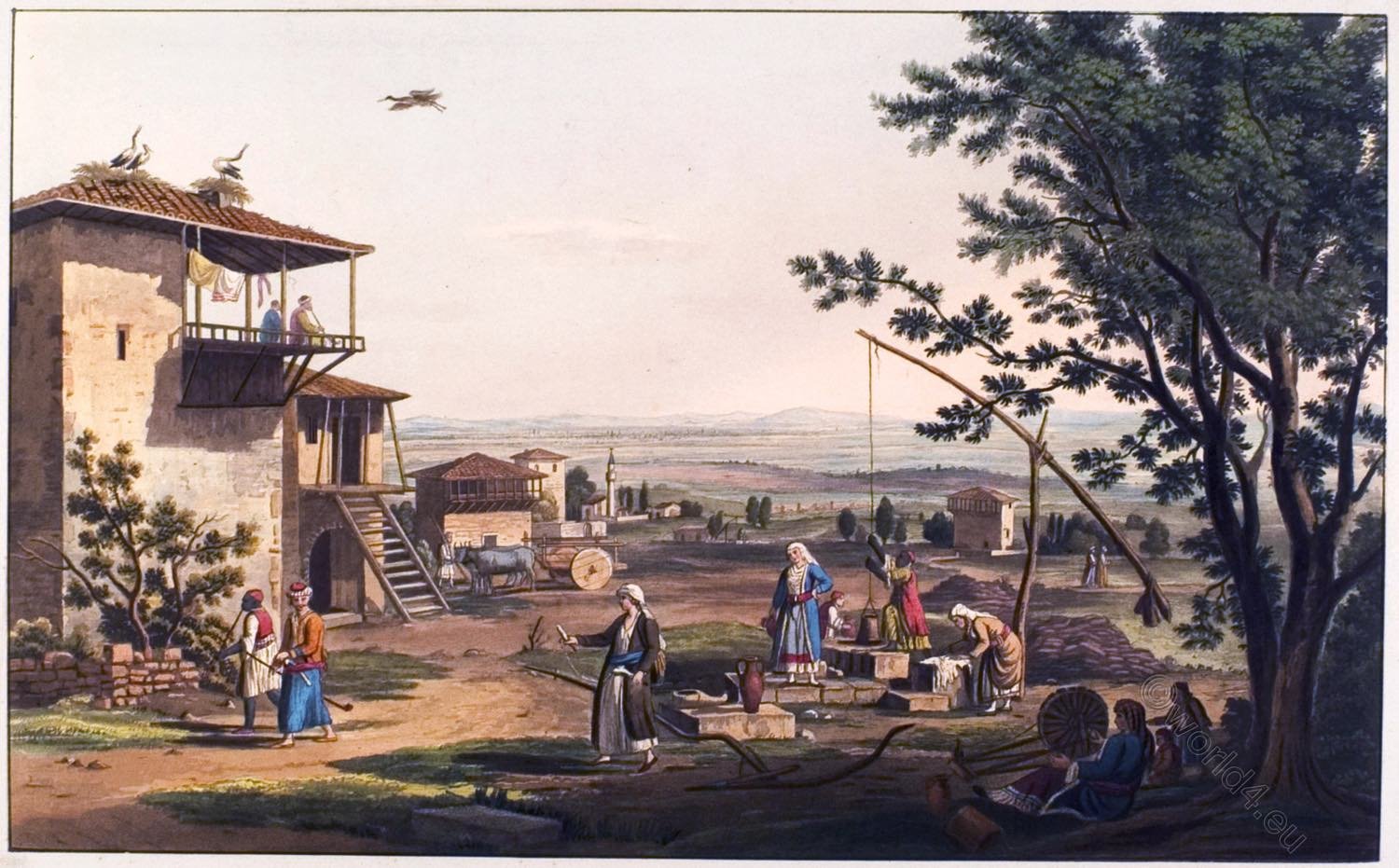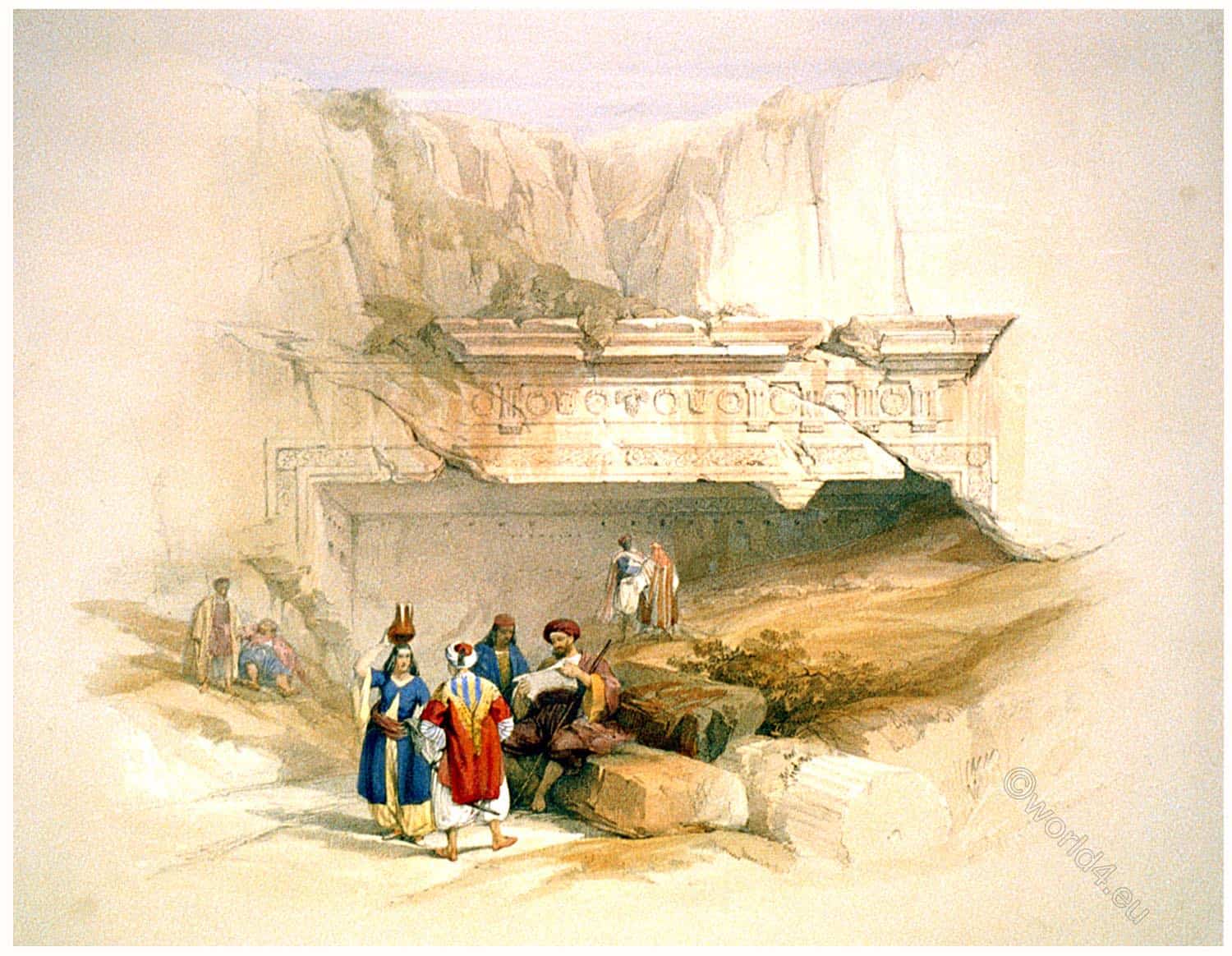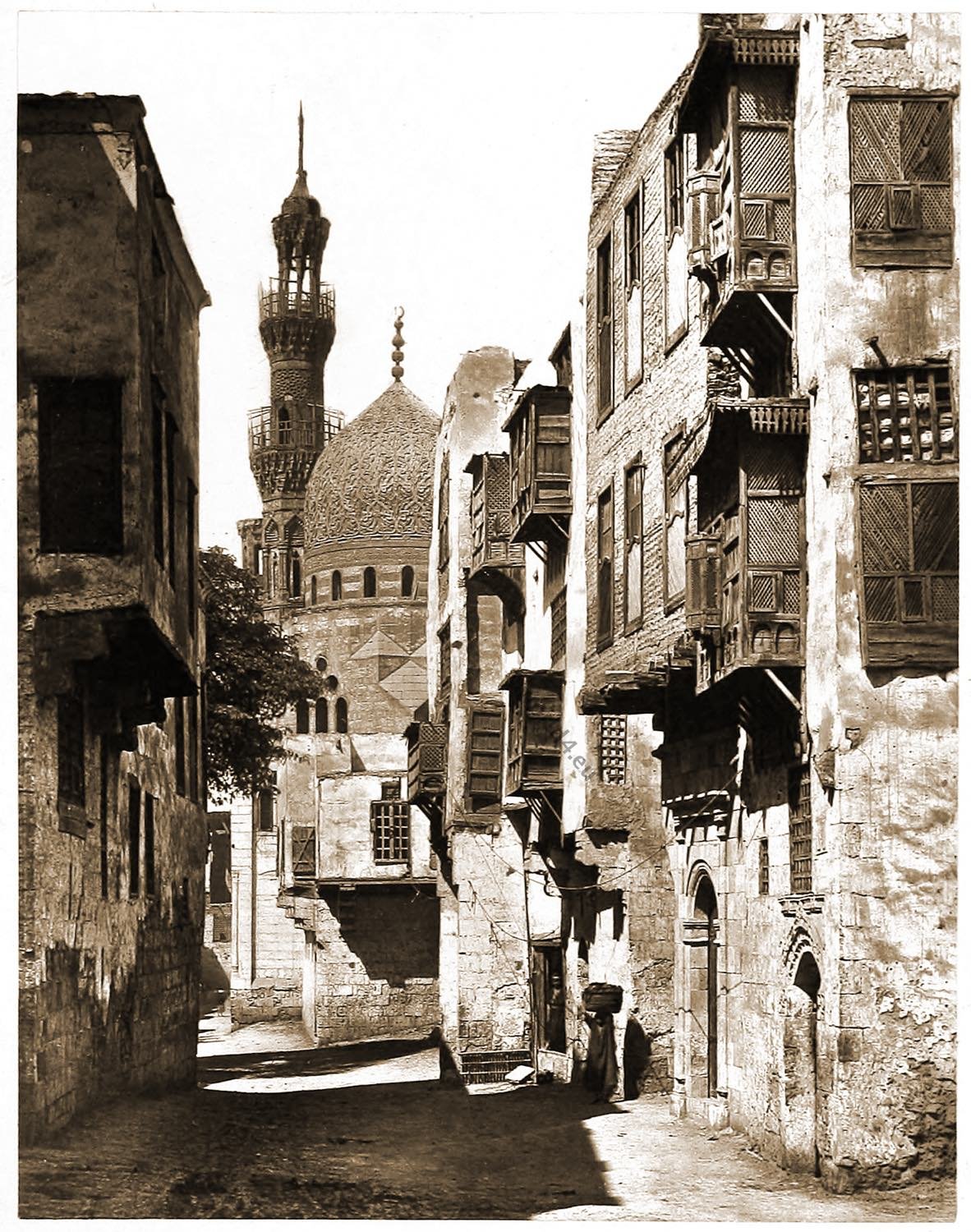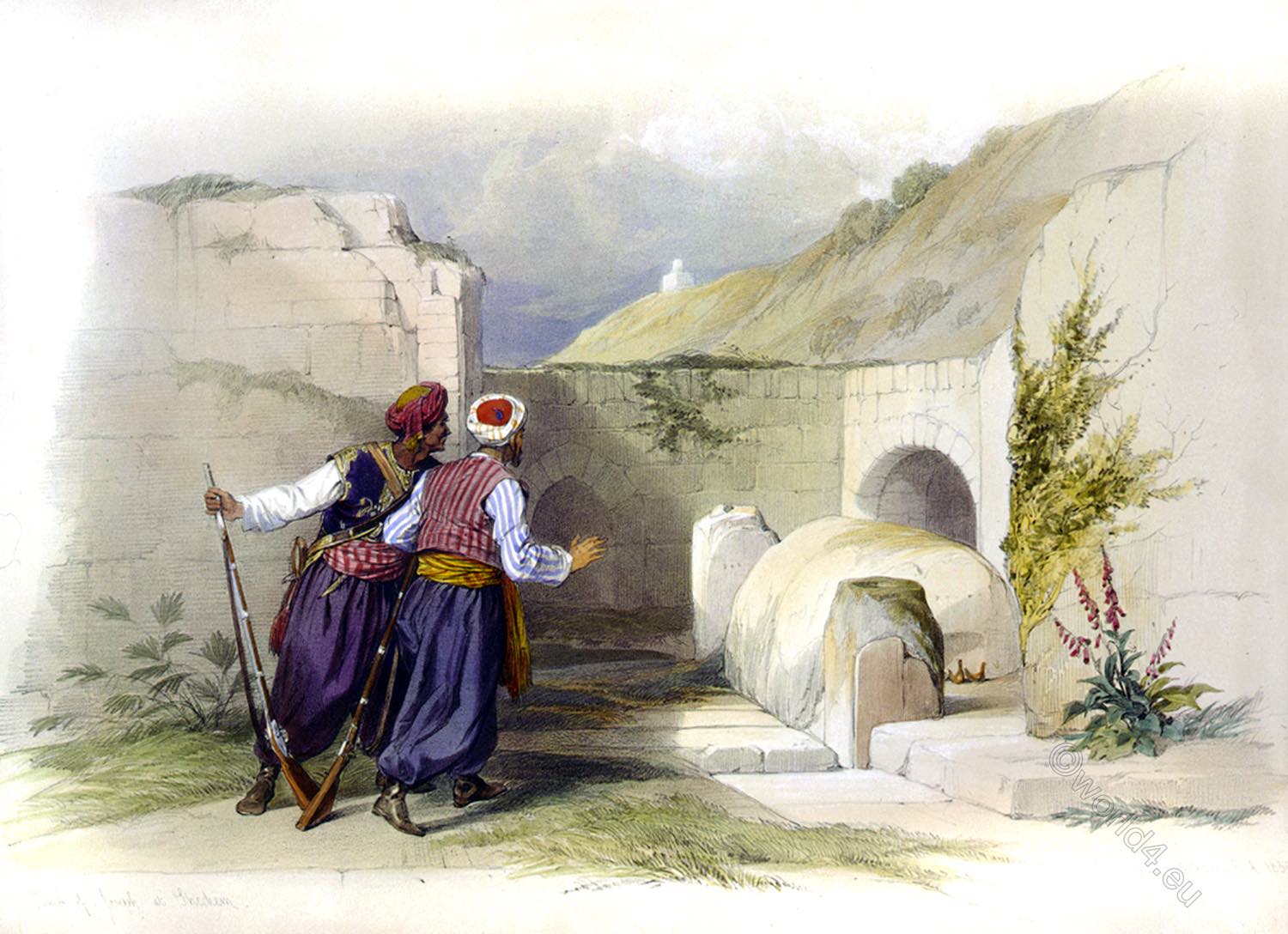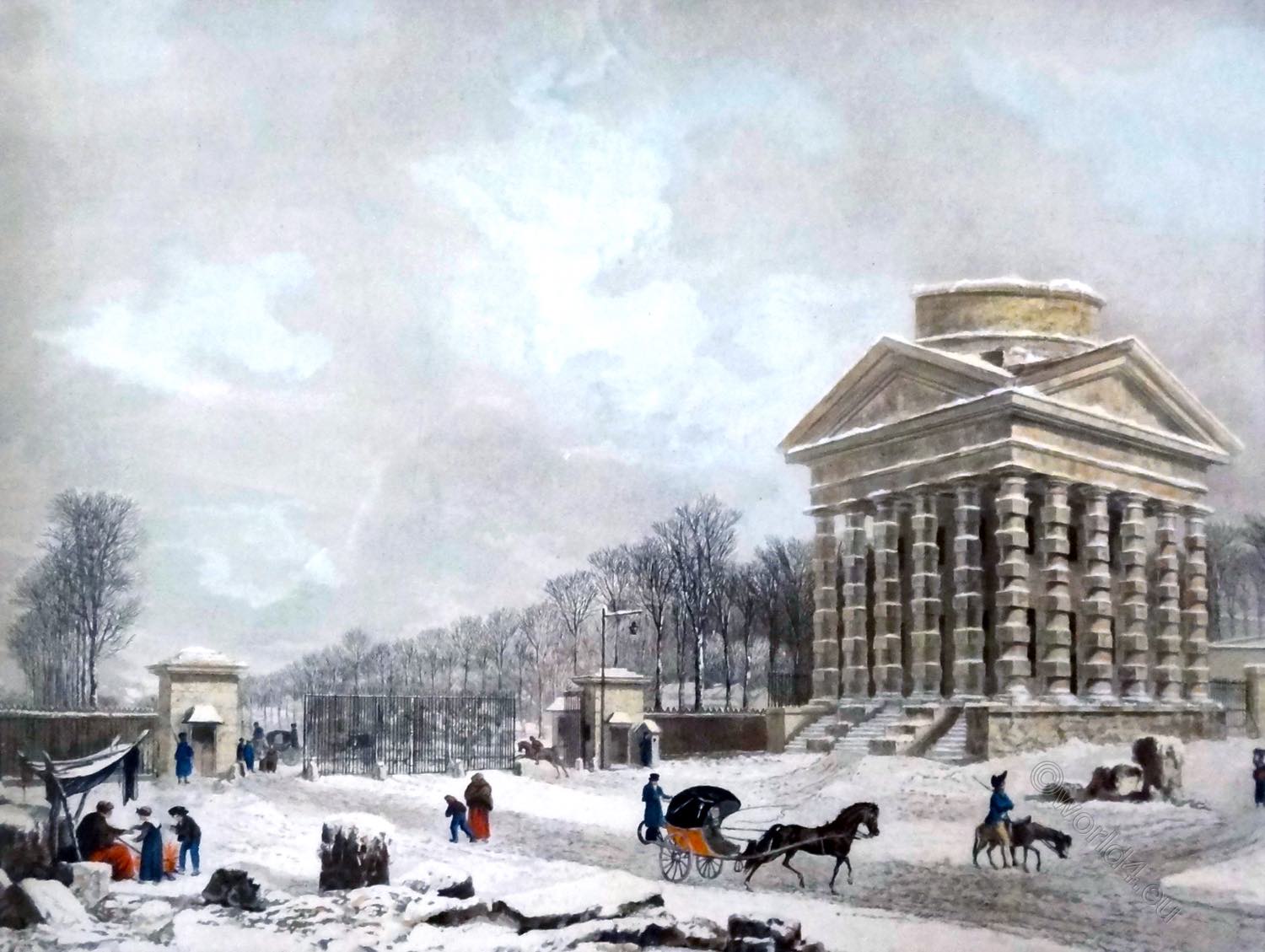
ENTRANCE TO NABLUS.
by David Roberts
The Shechem of the Old Testament, and Sychar of the New, once the capital of Samaria, was a city of very high antiquity, and eminent renown. Few in the Holy Land are so beautifully situated. Nablus (Nablous), its present name, is derived from the Romans, who established themselves here, rebuilt the city, and gave to it the title of Neapolis (New City). It is approached through long avenues of ancient olive-trees. 1)
It lies in a narrow valley, between Mount Ebal on the north, and Mount Gerizim on the south, or right hand of the View. The actual width of the valley in which Nablous 2) is situated is only about five hundred yards, between the bases of the mountains.
The City is long and narrow the houses are high, and generally well built, with domes upon the roofs, as at Jerusalem. It is situated at the summit of the valley, so that the waters nearly on its crest flow off in different directions; on the eastern side into the plain, and to the Jordan; on the western, the waters of some of its fountains flow down the valley towards the Mediterranean. The mountains rise boldly on either side, with a general character of sterility, which is more marked in Mount Ebal.
But this only increases the effect of the beauty and fertility of the valley, as Nablus appears embosomed in gardens and groves of fig, mulberry, and other fruit trees. Robinson says, that as he and his companion approached it, “a scene of luxuriant and almost unparalleled verdure burst upon our view.
The whole valley was filled with gardens of vegetables, and orchards of all kinds of fruits, watered by several fountains, which burst forth in various parts, and flow westwards in refreshing streams. It came upon us suddenly, like a scene of enchantment. We saw nothing to compare with it in all Palestine. 3)
1) Roberts’s Journal. 2) According to Abulfeda, the more correct name is Nabulus. 3) Biblical Researches, iii. 96.
Source: The Holy Land, Syria, Idumea, Arabia, Egypt, & Nubia, by David Roberts, George Croly, William Brockedon. London: Lithographed, printed and published by Day & Son, lithographers to the Queen. Cate Street, Lincoln’s Inn Fields, 1855.
Continuing
Discover more from World4 Costume Culture History
Subscribe to get the latest posts sent to your email.

